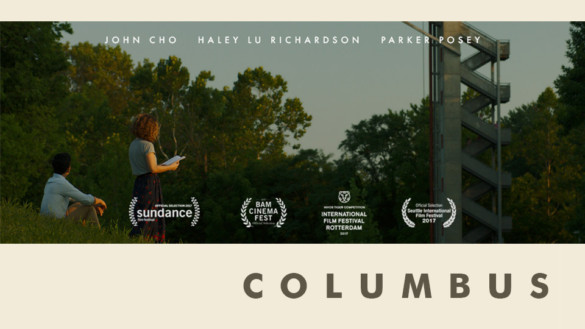Film Notes: Columbus
The film gets its power, it's meditative presence and emotional resonance from a deeply authentic exploration of relationships.

If you watch this movie, the chances are that you’ll end up wanting to go to Columbus, Indiana. Surely I mean Ohio? No, I mean the one in Indiana. The one architects call the “Athens of the Prairie”. A large company you’ve never heard of based there that manufactures diesel engines started paying architecture fees for buildings in the town back in the 1940s, 50s and 60s.
I guess builders figured they’d get the best architects since they weren’t paying for it. And they did. The works by Eero Saarinen (the Arch in St. Louis and Dulles Airport that serves Washington DC), I.M. Pei (JFK Presidential Library in Boston and the East Building of the National Gallery of Art in Washington) and many notable others make Columbus an important point on America’s architecture map.
These wonders of modern art not only provide the background for this film - where they are brought out by lots of frame in frame cinematography reminiscent of In the Mood for Love. But the art can be counted as a main character itself interacting with the other characters and determine the flow of the story.
For all that, this is not an architecture documentary.
The film gets its power, it’s meditative presence and emotional resonance from a deeply authentic exploration of relationships. Those between parents and their children and between friends.
A daughter’s dreams deferred to take care of an addict mother. The mother in turn is both dependent on the daughter but also hopeful she’ll go off and live her own life. And have her own career. A son who comes to Columbus from South Korea because his father, a architect of renown who, has suffered a stroke on a visit to Columbus on a lecture tour. He cares nothing for the work at the center of his father’s life he says. You can imagine a disappointed father. Absent. Immersed in his own career. The son is angry. He wishes his father would die in Columbus instead of being well enough to make the journey to Seoul so he could avoid doing the elaborate mourning process that would be required back at home. He’s angry at having to pause his life and work to be there for a father who never paused for him.
The daughter and the son strike up an unexpected friendship, complicated by the hint of a possible romance. But the age and experience gap give rise to a friendship instead. She takes him around her hometown showing him her favorite buildings. He gingerly asks her about her life belying his own deep connection to architecture. We see the power of relationships to change us, to open up possibilities.
The acting is superb. Haley Lu Richardson is able to pull off the vulnerability of an idealistic, artistic young girl who has grown up too fast. John Cho (of recent fame in Master of None and for being Harold in Harold and Kumar go to White Castle) is calm and measured. His character’s relationship with another woman - his father’s student played a surprisingly good Parker Posey - is complicated. There is a past, love unrequited. The three come together like siblings helping each other navigate the burdens and hopes of their parents. An impressive debut from South Korean director Kogonada worth watching.
And, in case you were wondering at this point. Columbus, Indiana is less than a hours drive south from Indianapolis. Or, in case you end up in the one in Ohio, you just need to go 3 hours west.